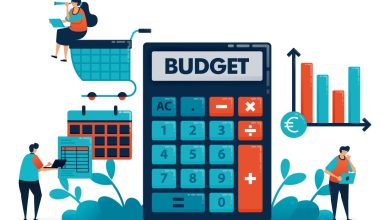
Navigating the complex world of student loan bankruptcy can be daunting. Many of us have faced the daunting task of managing student loan debt, and it often feels overwhelming. Given the significant financial burden student loans can impose, understanding the nuances of discharging these debts via bankruptcy is crucial.
Student loans are generally not discharged in bankruptcy unless the borrower can prove undue hardship. This requirement often deters many from even attempting to include their student loans in bankruptcy filings. However, exploring this option could potentially alleviate a significant portion of financial stress if successfully demonstrated.
In our exploration, we discuss the criteria used to evaluate undue hardship, and the impact declaring bankruptcy can have on one’s financial future. As we dissect these elements, we aim to provide insights that empower readers to consider all available options for managing their student loan debt.Learn more about Student Loan Bankruptcy
Understanding Student Loan Bankruptcy
Student loan bankruptcy is a complex process that requires us to navigate intricate legal procedures. We’ll explore how the Bankruptcy Code interacts with student loans, the adversary proceeding necessary for discharge, and the criteria such as undue hardship essential for successfully discharging student loans.
The Bankruptcy Code and Student Loans
Under the Bankruptcy Code, student loans hold a unique status compared to other unsecured debts. Unlike credit card debts, they are not automatically dischargeable. We are required to demonstrate that repaying such loans would cause undue hardship.
When filing for Chapter 7 or Chapter 13 Bankruptcy, student loans remain unless we take further steps to seek relief through the court. This process emphasizes the distinct treatment of these educational debts within the legal framework.
Understanding that the Department of Education and the Department of Justice may participate in these proceedings adds an extra layer of complexity. Their involvement ensures that our request for discharge undergoes rigorous examination.
The Adversary Proceeding Process
An Adversary Proceeding acts as a lawsuit within the bankruptcy case and is crucial for student loan discharge. Through this legal action, we initiate a separate court process to evaluate our claim of undue hardship. This proceeding requires us to present evidence and argue our case before the bankruptcy court.
Attorneys often play a significant role in guiding us through this proceeding, ensuring our case complies with legal standards. They help in gathering pertinent documentation and developing legal strategies aligned with either the Brunner Test or Totality of Circumstances Test.
Navigating this process involves understanding both tests, as they apply differently based on jurisdiction. A successful adversary proceeding could lead to a partial or full discharge of our student loan obligations.
Criteria for Discharging Student Loans
Central to discharging student loans in bankruptcy is proving Undue Hardship. The Brunner Test, a commonly used standard, requires us to demonstrate three criteria: poverty, persistence of financial difficulty, and a good faith effort to repay.
Alternatively, the Totality of Circumstances Test evaluates undue hardship by examining various financial and personal factors. These include income, expenses, and any other relevant conditions affecting our repayment abilities.
The burden of proof lies with us, and success necessitates comprehensive preparation and documentation. By effectively meeting legal criteria, we aim to convince the bankruptcy court of our inability to maintain a minimal standard of living while repaying these loans.
Navigating the Repayment and Forgiveness Options
We can explore various strategies to manage student loan debts. Let’s look at income-driven repayment plans, loan forgiveness programs, and consider if consumer bankruptcy is an option.
Income-Driven Repayment Plans
Income-driven repayment plans adjust monthly payments based on our income and family size. These plans include Income-Based Repayment (IBR), Pay As You Earn (PAYE), and Revised Pay As You Earn (REPAYE). They aim to make loan repayment more manageable for struggling borrowers.
These plans can significantly reduce monthly payments, extending the repayment period to 20 or 25 years. After this period, any remaining balance may be forgiven. It’s crucial to annually recertify our income and family size to maintain eligibility. This option mainly benefits those with federal student loans. Private student loans typically do not offer similar income-driven options.
Loan Forgiveness Programs
Federal student loans offer several forgiveness programs. Public Service Loan Forgiveness (PSLF) is available for those working in qualifying public service roles. Teachers may benefit from the Teacher Loan Forgiveness program after teaching for five consecutive years in low-income schools.
Enrolling in an income-driven repayment plan is often required to benefit from these programs. It’s essential to keep records of employment and payment history to meet program requirements. Loan forgiveness can be a valuable debt relief tool, removing the burden of remaining debt after fulfilling service conditions. Understanding eligibility and requirements is key to making the most of these opportunities.
Consumer Bankruptcy Considerations
Filing for bankruptcy is a common misconception often believed to automatically discharge student loans. In reality, the process is more complex. We usually must prove “undue hardship” in court, which can be challenging. This involves passing a means test, often requiring a bankruptcy attorney’s assistance.
Federal student loans are tough to discharge, whereas private loans may have slightly different rules. The Department of Justice attorneys may get involved to assess the borrower’s case. Successfully discharging loans can provide much-needed debt relief for those who qualify. However, it impacts our credit report significantly, and exploring other repayment options should be a priority before considering this avenue.




